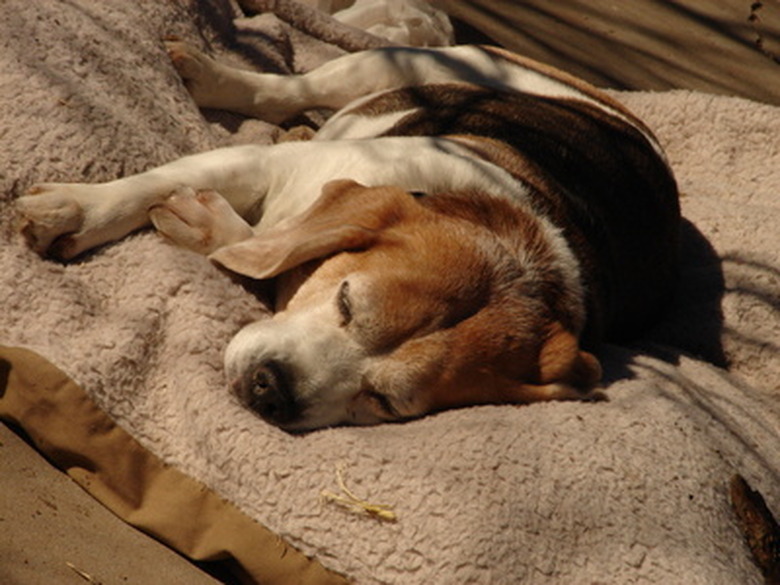Dog Hair Loss & Prednisone
Hair loss in dogs can result from being treated with prednisone, a drug used to treat a variety of conditions in dogs and several other animal species. This is only one of several signs of a serious condition that commonly affects dogs after long-term prednisone use. While this drug significantly improves the lives of many at-risk dogs, it also comes with risks of which you should be aware.
What does prednisone do for dogs?
What does prednisone do for dogs?
Prednisone is a glucocorticoid prescribed to dogs, cats, small mammals, horses, reptiles, birds, and humans. It's a type of corticosteroid medication given as an oral tablet or injection to replace or supplement steroid hormone, which is made by the adrenal glands. In Addison's disease, prednisone acts as a hormone replacement to bring steroid hormone up to the correct level. It reduces inflammation because of infection, injury, exposure to toxins, allergies, or an overactive immune system, and it inhibits cancerous and noncancerous tumor growth.
Side effects of prednisone
Side effects of prednisone
While prednisone is very useful for many conditions, your dog may experience some side effects shortly after starting treatment, which may include:
- Increased thirst and urination
- Panting
- Loss of energy
- Increased hunger
- Nausea or vomiting
- Secondary bacterial, fungal, or parasitic infections
- Urinary tract infections
- Delayed wound healing
- Muscle weakness
- Hard calcium deposits in the skin
Prediabetic dogs may develop diabetes, but this is usually temporary. Your dog will probably regain insulin sensitivity when the treatment ends. If he experiences side effects that outweigh the benefits of taking prednisone, your vet might prescribe a different steroid medication to reduce adverse side effects while still achieving the greatest benefit.
Long-term prednisone use in dogs
Long-term prednisone use in dogs
After long-term treatment with prednisone, some dogs develop Cushing's disease (hyperadrenocorticism), which is a serious condition that affects the endocrine system. Dogs develop Cushing's disease when their adrenal glands produce too much cortisol. This hormone overproduction could have a significant effect on their organs and their quality of life.
Does prednisone cause hair loss? Long-term treatment with prednisone can cause hair loss, which is a symptom of Cushing's disease. The hair loss is usually symmetrical and occurs mainly in the midsection. Dogs rarely lose hair on their head or their feet. The symptoms can sometimes go unnoticed because they mimic changes caused by the natural aging process. Other signs of Cushing's disease include increased hunger, thirst, or urination; pot belly; panting; muscle weakness/atrophy; lethary; or thinning skin.
Veterinary-induced Cushing's disease is reversible, and symptoms should begin to disappear after tapering off the medication. However, recovery could take some time depending on the severity of your dog's symptoms.
Reduce your dog’s risk factors
Reduce your dog's risk factors
If your vet recommends corticosteroids for your dog, there are steps you can take to reduce your dog's risk of developing a secondary condition. The benefits of taking prednisone long term only outweigh the risks if your dog has a life-threatening condition that requires an immunosuppressant. For conditions that don't put your dog's life at risk, such as pruritis (itchiness), talk to your vet about administering prednisone every other day and combining it with another treatment to reduce the steroid dose without depriving your dog of relief.
If your dog needs prednisone for longer than three months, book an appointment with your vet so you can do blood and urine tests and reevaluate your dog's treatment plan to avoid unnecessary steroid use.
